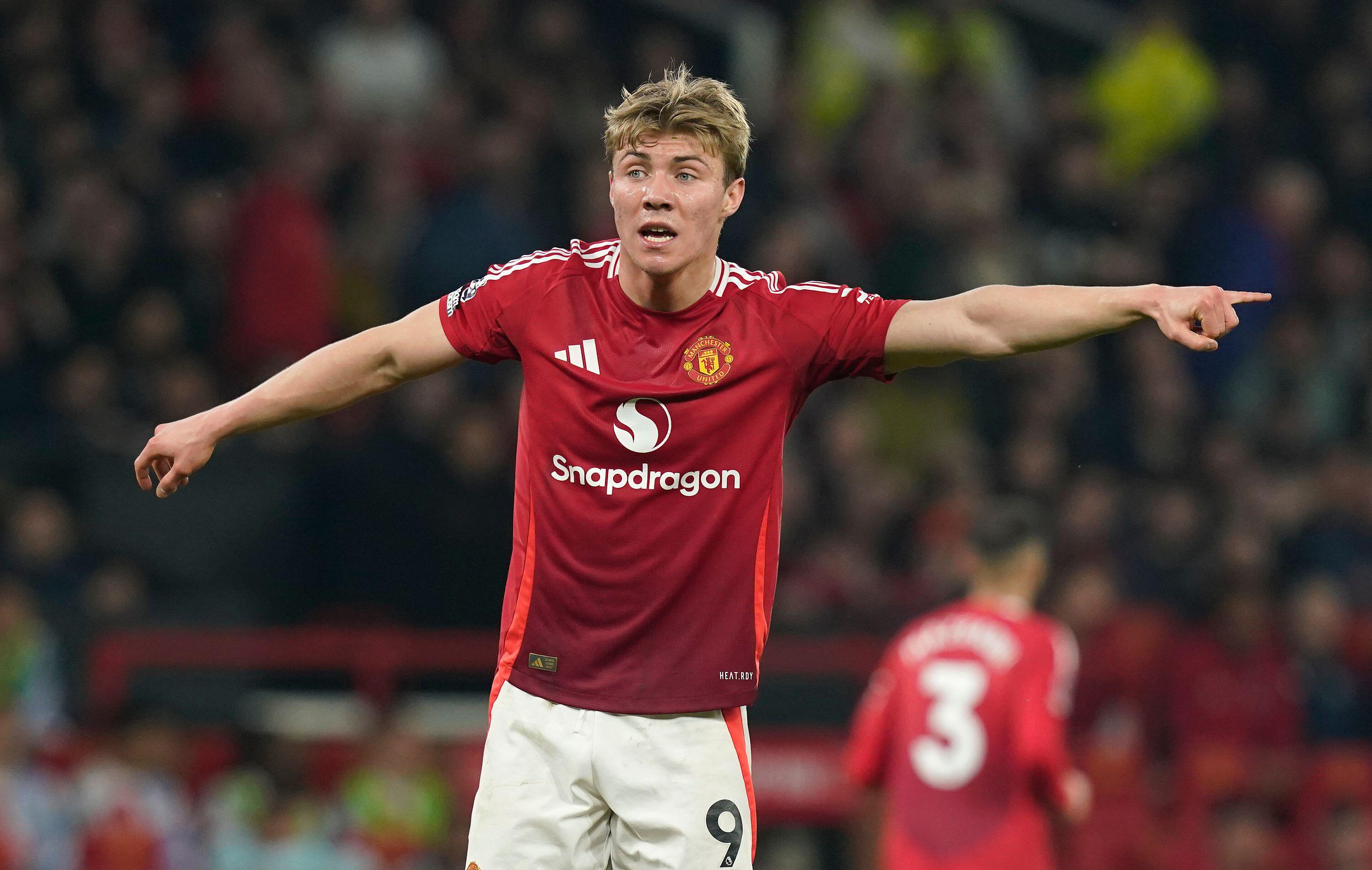FourFourTwo's 50 Biggest Derbies in the World: 20-11
A London derby, De Klassieker and the Derby della Madonnina all feature in our penultimate list of the greatest club rivalries...
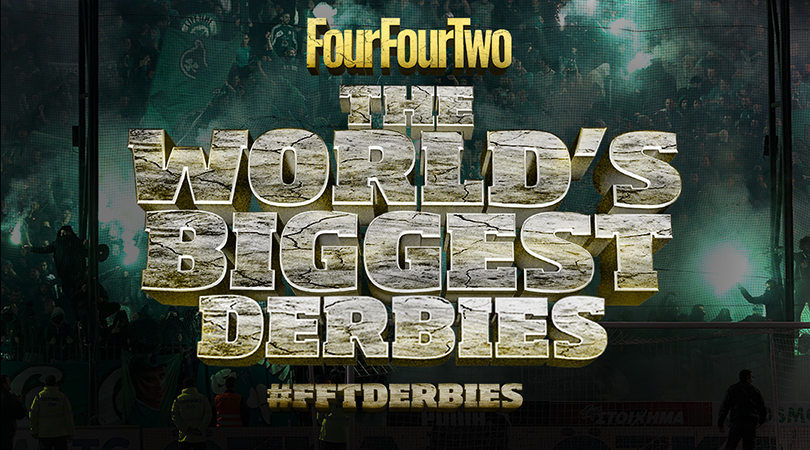
Words: Gary Parkinson and Chris Flanagan.
20. Arsenal vs Tottenham
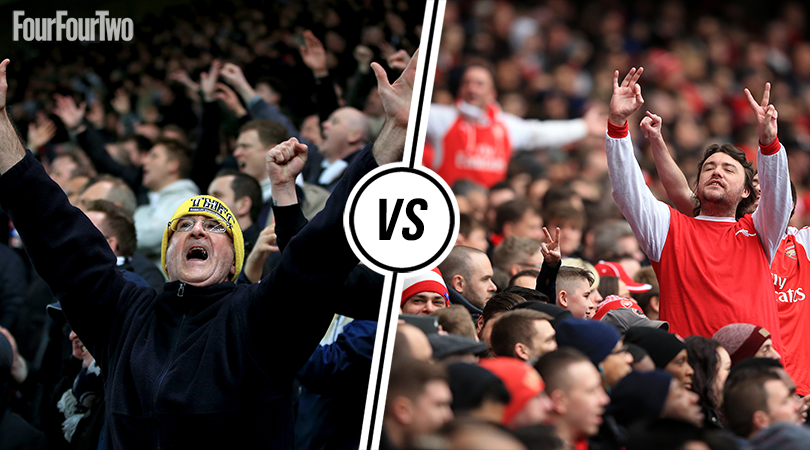
Compared to some derbies, this doesn’t really matter. It rarely decides a title: Spurs come and go from the top four, while Arsenal have often finished third or fourth. They’re not even that close: the four-mile gap means that the Emirates is closer to Waterloo than to White Hart Lane (with apologies to non-Londoners for that metropolitan reference). And Chelsea’s recent accretion of domestic and continental silverware means that neither can confidently claim to be the capital’s best club.
However, it obviously matters a great deal. It’s London’s highest-profile derby, between two teams with millions of fans around the world. The teams first clashed in 1887 when Arsenal were still in Kent, but the rivalry cranked up several notches when Henry Norris moved his club from Woolwich to Holloway, and a whole heap more in 1919 when Norris’s politicking won Arsenal a controversial promotion that still rankles with the White Hart Lane diehards. The impending centenary of that decision, which confirmed Tottenham’s relegation despite the top flight’s expansion, will only restoke those flames for a new generation.
READ THIS: Henry Norris: Spurs’ first Arsenal enemy
It soon turned nasty: a 1922 game was so violent that the FA threatened both clubs with playing behind closed doors. Hostilities lessened between 1928 and 1950 as the clubs were in separate divisions for all but two seasons, but since then they’ve only been apart for one campaign and familiarity has bred contempt, especially as the Premier League stakes have grown so high – and, arguably, as the support base has become less parochial and more geographically diverse. As Spurs fan Jim O’Neill puts it, “When Pat Jennings left Spurs for Arsenal, he got applauded when he came back to the Lane, but Sol Campbell needs an armed guard.” GP
READ THIS: FFT's 100 Best Stadiums: Emirates
Get FourFourTwo Newsletter
The best features, fun and footballing quizzes, straight to your inbox every week.
READ THIS: More Than A Game: Arsenal vs Tottenham
19. Olympiakos vs Panathinaikos
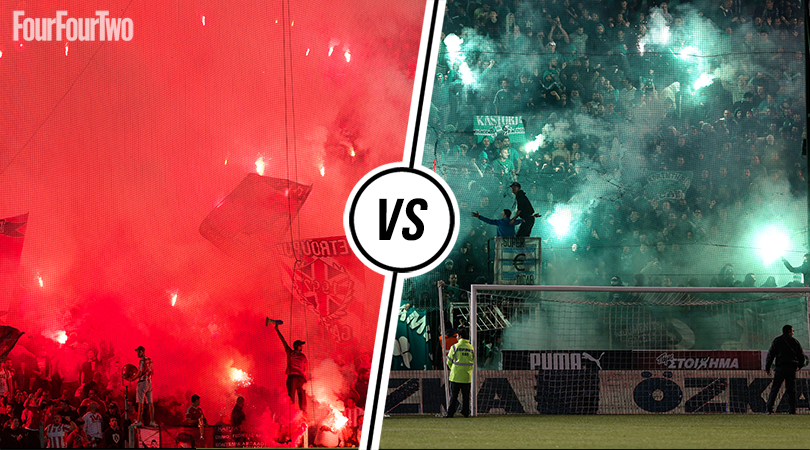
Two-and-a-half millennia ago, the cities of Athens and Piraeus were linked by eight miles of siege-resistant walls. Now their teams are united in mutual loathing by a fixture known as the Derby of the Eternal Enemies or indeed the Mother of All Battles. One of Greece’s oldest clubs, Panathinaikos originally represented Athens’ high society; Olympiakos, by contrast, gathered their fans from the working port city of Piraeus.
The two are Greece’s dominant sides, winning 64 of the 82 national league titles; there has been one other champions since 1994 – AEK Athens in 2017/18. Olympiakos have the upper hand with 44 titles to 20. This inequality doesn’t seem to have had a soothing effect on the derby, which now features no away fans but plenty of riot police, fireworks and quite often tear gas. In 2015 an Olympiakos player needed treatment after being struck by a flare; in 2012 the game was abandoned after Panathinaikos fans set fire to the seats and scoreboard (in their own stadium); and in 2007 a fan was stabbed to death before the two sides clashed – at women’s volleyball. GP
READ THIS: More Than A Game: Olympiakos vs Panathinaikos
18. Flamengo vs Fluminense
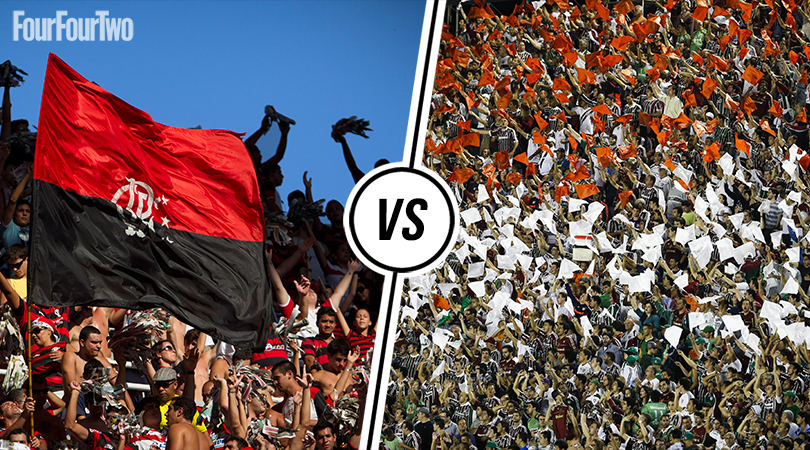
Any football-match bucket lister should consider Fla-Flu in the Maracana. Rio de Janeiro’s two most successful clubs draw a big crowd, although perhaps not quite the 194,000 said to have packed into Brazil’s most iconic stadium in 1963, setting a world record for a club fixture.
Fluminense (it means ‘inhabitant of Rio state’) was formed in 1902 by aristocratic youngsters who’d seen this foot-ball thing while studying in Europe. Flamengo was primarily a rowing club until 1911, when some members who also played football for Fluminense decided to form their own team; at the first derby in 1912, nine of Flu’s line-up were facing their old colleagues. During an absurd title-deciding 1941 fixture, Fluminense tried to protect a lead by hoofing clearances into a nearby lagoon, but Flamengo’s rowers paddled out to retrieve them. GP
READ THIS: FFT's 100 Best Stadiums: Maracana
17. FK Velez vs HSK Zrinjski
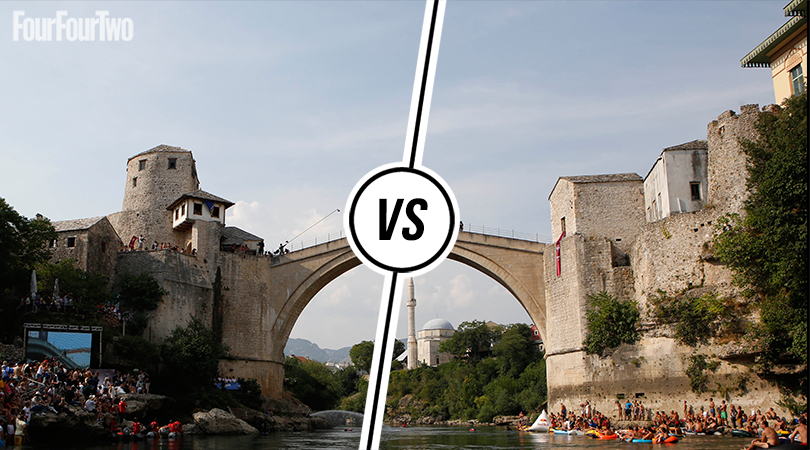
You didn’t expect that, did you? But the Mostar derby is one of the world’s most fascinating and tempestuous clashes. Now in Bosnia and Herzegovina, Mostar is split geographically by the Neretva River – and that fluvial schism (plus a war or two) has helped to create an ethno-cultural partition between the primarily Catholic Croat west bank and the predominantly Bosniak Muslim east bank (it's the bridge of Mostar pictured above). Named after a Croatian aristocrat who died defending his country from the Ottomans, Zrinjski have long been identified with Croat nationalism; Velez were formed by a mixed-ethnic bunch of Communist anti-monarchists.
The sides first met in 1922, but those political convictions led to frequent closure whenever the incumbent government wanted to silence either clubs’ ethos. Nationalist Zrinjski prospered during World War Two when Mostar was part of the fascist Independent State of Croatia, but within 10 days of the war’s end the Communist party had reformed Velez while Zrinjski were closed down, their archives destroyed – whereas the aftermath of the 1990s Yugoslav wars saw Zrinjski brought back to life while Velez were marginalised.
After 62 years, the sides were finally brought back into sporting opposition in 2000 by the merging of Bosnia’s previously separate Croat and Bosniak leagues; they remain in competition, for the time being at least. Zrinjski remain a totem of Croatian identity, but Velez is more complicated: still left-leaning (their fans carry images of Che Guevara and Marshal Tito), the club’s support is now mostly Muslim. In its history, geography, politics, ethnicity and culture, the Mostar derby is one of the world’s most fascinating games. GP
READ THIS: More Than A Game: FK Velez vs HSK Zrinjski
16. Ajax vs Feyenoord
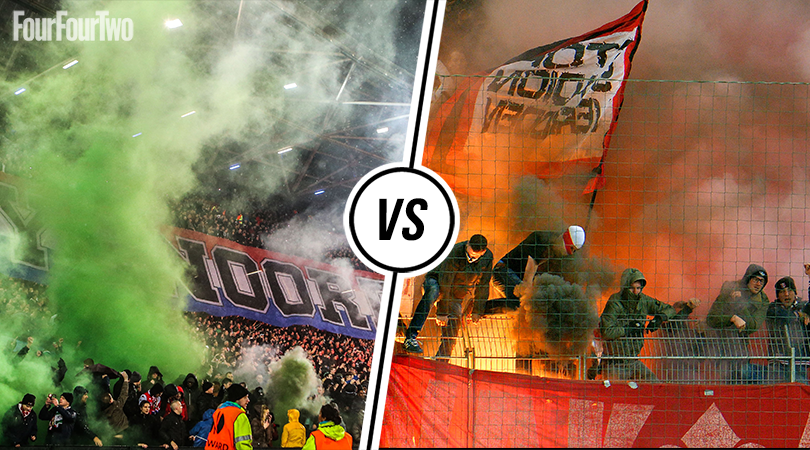
Since its inception in 1921, De Klassieker has become a clash of two Dutch cultures. Ajax represent Amsterdam: classical, artsy and liberal. Feyenoord are Rotterdam: industrial, largely rebuilt since being flattened in World War Two, and increasingly right-wing – controversial politician Pim Fortuyn founded his anti-immigration party in the city. Ajax’s glamour contrasts with Feyenoord’s gritty populism (their stadium De Kuip has the better atmosphere).
The rivalry reached new levels in the early 1970s as Dutch football dominated Europe: Feyenoord won the 1970 European Cup but Ajax won the next three and cemented a Rotterdam-reviled reputation for graceful football. So imagine the shock when in 1983, after a 36-year-old Johan Cruyff led Ajax to the double but wasn’t offered a new contract, he jumped the divide and joined Feyenoord. Ajax promptly won De Klassieker by a record 8-2 scoreline amid riots in the stadium – but Feyenoord ended the season, and Cruyff’s playing career, by winning the double.
The rivalry hasn’t always been quite so Hollywood, and has descended into murderous violence: a thirtysomething man was killed in 1997’s pre-arranged Battle of Beverwijk, for which hooligans arrived armed with knives, bats, bars and hammers. Unsurprisingly, away fans are currently banned from De Klassieker. GP
READ THIS: FFT's 100 Best Stadiums: De Kuip - Amsterdam Arena
READ THIS: More Than A Game: Ajax vs Feyenoord
15. Independiente vs Racing Club
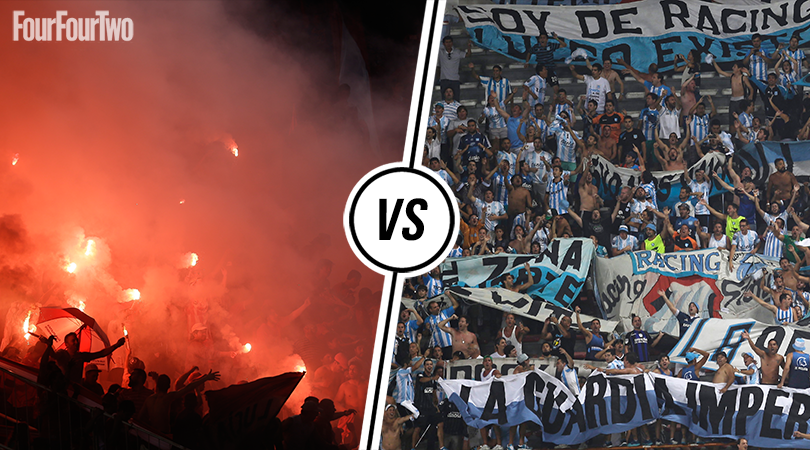
A pair of powerhouses, surpassed for Argentine titles only by River Plate and Boca Juniors. Racing Club have won the league 17 times and were the first Argentine team to be crowned world champions, when they beat Celtic in the 1967 Intercontinental Cup. Independiente, 16-time champions, have won more Copa Libertadores titles (seven) than any other club. In a Latin version of the Dundee derby, they’re just 300 metres from each other in the working-class suburb of Avellaneda, on the outskirts of the Buenos Aires metropolitan area.
Independiente’s 48,000-seat Estadio Libertadores de America used to be known as Doble Visera or ‘Double Visor’ for its two overhanging cement stands, before being substantially updated with the money Atletico Madrid paid for Sergio Aguero. Racing Club’s spectacular circular 51,000-capacity home is El Cilindro to the fans, although it’s actually named after ex-Argentina president Juan Peron. You may remember him from that time you had to watch Evita.
Fighting broke out during a 1-1 draw in 1961, and the referee had to temporarily suspend the game as he dished out eight red cards – four for each side. A meeting in 2006 didn’t go smoothly either, away fans reacting to hosts Independiente taking a 2-0 lead by rioting and attacking police, who in turn responded with tear gas. The match was halted and the FA banned away supporters in all of the country’s top divisions, as well as Racing Club fans from their own stadium. When Diego Milito lined up for Racing Club and younger brother Gabriel was at Independiente, Diego was sent off in the season’s first meeting and tried to get his sibling dismissed in the return. Mother Mirta had to leave the stadium as they squared up. CF
READ THIS: FFT's 100 Best Stadiums: El Cilindro
READ THIS: More Than A Game: Independiente vs Racing Club
14. Portsmouth vs Southampton
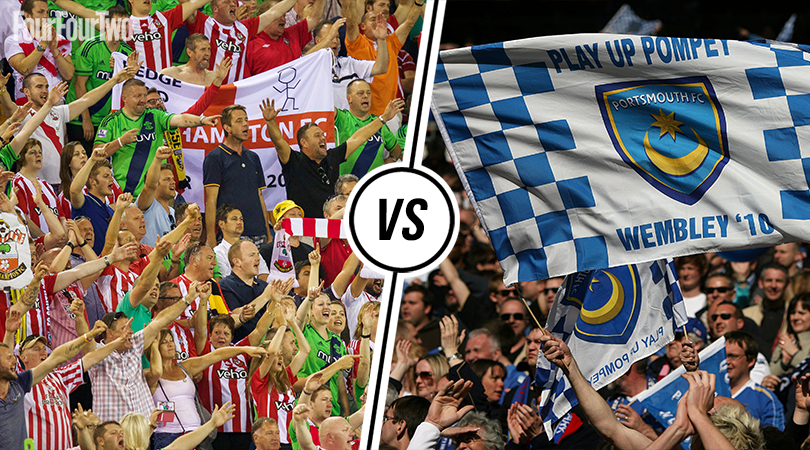
Sometimes, derbies in relatively isolated places create enemies of convenience: “You’re nearest, you’ll do.” Not so with Pompey-Saints, where the discord runs deep. The neighbouring port cities relish their differences: Portsmouth vs Southampton has come to mean Royal Navy vs merchant navy, the military against the market. Although it’s often unnoticed compared to the Isle of Wight, Pompey is itself an island, and many Pomponians consider it separate from the rest of Hampshire (dominated by Southampton). The social differences have been exacerbated by contrasting economic situations.
Fluctuating fortunes on the field have produced asynchronous relegations and promotions, giving the derby a rarity value (there have been only 70 meetings in “first-class” football) that has only strengthened the mutual contempt. The teams first met in 1899 and joined the Football League together in 1920, but a gradual reversal in fortunes as pre-eminence passed from Portsmouth to Southampton meant there were no competitive derbies between 1927 and 1960 and only four between 1976 – when a last-gasp Southampton goal condemned Pompey to relegation – and 2003. One of those, at Pompey’s Fratton Park, ended with Saints boss Lawrie McMenemy covered in phlegm; another produced 116 arrests.
From 2003 the two sides briefly coexisted in the Premiership, but not for long. A year after returning Portsmouth to the top flight, Harry Redknapp left and soon took the saddle at Southampton, incurring the wrath of his former fans. He oversaw Saints’ relegation (expedited by a 4-1 Fratton battering) then rejoined Pompey, saving them from the drop and leading them to the FA Cup – but to many Portsmouth fans, he remains an unspeakable Judas. Winning isn’t everything. GP
READ THIS: More Than A Game: Portsmouth vs Southampton
13. AC Milan vs Internazionale
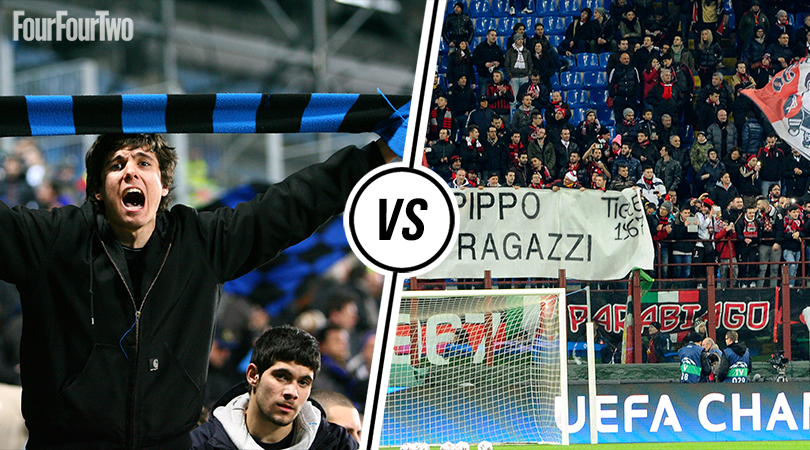
One of football’s most famous derbies isn’t quite what it seems. Coexisting relatively peacefully (usually), the fanbases aren’t particularly split by geography, class, politics or religion – although it wasn’t always thus. AC Milan were founded as the Milan Cricket and Football Club in 1899, but nine years later came a split when some members wanted to sign foreign players – hence Internazionale Milano. Perhaps fittingly, the first Derby della Madonnina (named after the Virgin Mary statue atop the Duomo cathedral) wasn’t even in Italy – it was in Switzerland. The idea arose that Inter were bourgeois and Milan blue-collar, reflected in their early nicknames: Bauscia (braggarts) and Casciavit (Screwdrivers).
Despite the poorer fanbase, AC Milan were backed by Pirelli tyres and in 1926 built San Siro (later renamed the Giuseppe Meazza after the 1938 World Cup-winning captain who played for both clubs), selling it to the local authorities in 1935. In 1940 Inter borrowed the revamped stadium for a big game; seven years later they moved in properly with the club from which they had split.
Although the two sets of fans are usually cordial rivals, trouble has flared on occasion. After a fan died in 1983 the ultras made a pact to calm the violence, but it can still flare up – literally: during a 2005 Champions League derby, Milan goalkeeper Dida was struck by a firework, and the police have been known to use tear gas on unruly fans. Even so, the clubs would probably have rubbed along together for a while longer had Juventus’s successful move to their own stadium not proved such a lucrative idea. Inter have been examining their options but it looks like AC Milan will move first, with plans for their own stadium in nearby Portello by 2020. The odd couple may not be together much longer. GP
READ THIS: FFT's 100 Best Stadiums: San Siro
READ THIS: More Than A Game: AC Milan vs Inter
12. Chivas Guadalajara vs Club America
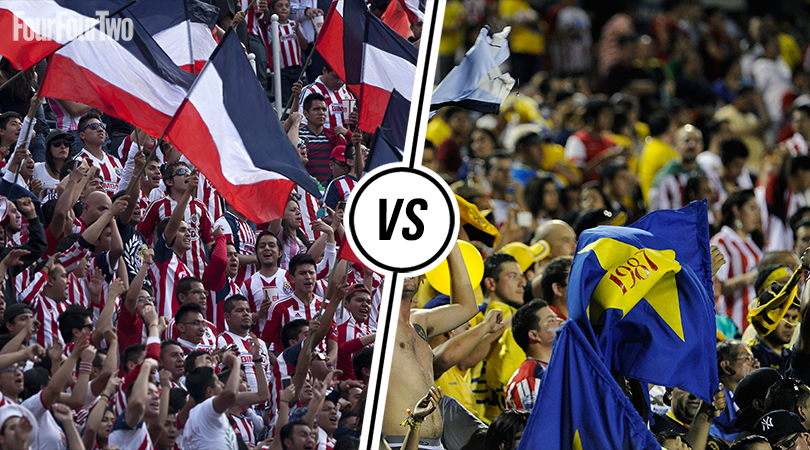
Football is big news in Mexico, and this is the biggest match: the two biggest and most successful clubs, each representing a different ethos. Playing at the iconic Estadio Azteca, capital club America are simultaneously Mexico’s most popular and most hated club, with a taste for buying in top foreign players – as opposed to the reputation for producing homegrown talent which typifies Chivas, the biggest team in Mexico’s second city. That’s why it’s known as El Clasico Nacional, El SuperClasico or even, when space permits, El Clasico de Clasicos.
The teams first met in 1943 and, as you might expect, their fortunes have waxed and waned since. Chivas enjoyed the 1950s and ‘60s in a winning-seven-titles-in-nine-years kind of way, but things have never been quite as good again. After the ‘Riot of 1983’ – an on-field brawl involving players, fans and staff – during a play-off semi-final, which Chivas went on to win, they won just two of the next 30 league meetings… and America won five titles in seven years. They are the only clubs in Liga MX history to never get relegated, although Chivas have sailed ever closer in recent years. They’ll get little sympathy from America’s fans, who revel in the unofficial motto ‘Odiame Mas’ (“Hate me more”). GP
READ THIS: FFT's 100 Best Stadiums: Azteca
11. Marseille vs Paris Saint-Germain
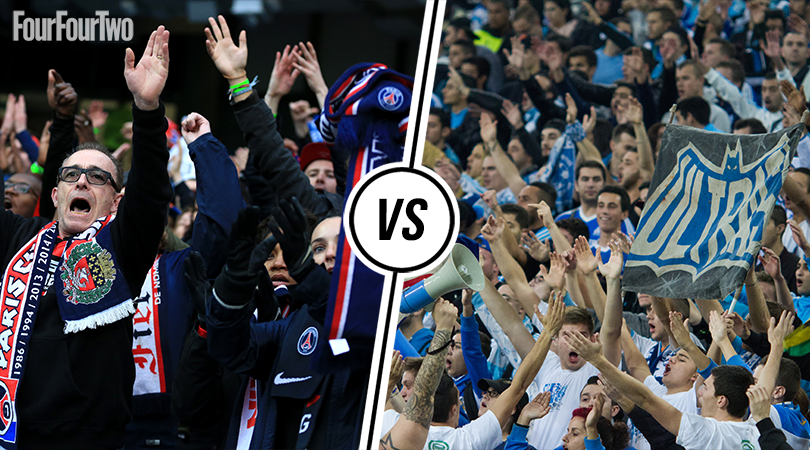
In a country as centralised as France there has long been the potential for strife between the self-appointed metropolitan elite and the uppity provincial (or in this case Provençal) proletariat. Trouble is, for several decades Paris refused to play properly. While Marseille were formed in 1899 and successful for long periods ever since, PSG only emerged in 1970 and didn’t really register until the first Ligue 1 title in 1986 under Gerard Houllier, after which Bernard Tapie and TV station Canal+ poured money into l’OM and PSG respectively. Despite being born poor in Paris, Tapie despised PSG, whom he regarded as the nouveau-riche arrivistes; a natural promoter, he would mark the build-up to every Classique with media barbs about the opposition.
That made it a big game but also heightened the violence: former Marseille player Chris Waddle remembers a brick thrown at the team bus. PSG began to attract right-wing extremists who, like the contemporary British hooligans waving Union Jacks, used patriotism as a cover for nationalism and racism – and Marseille, from a Mediterranean port city featuring a multi-ethnic mix of Spanish, Italian and North African immigrants, were an obvious nemesis. Incidents include the hospitalisation of nine policemen at a Cup semi-final, hundreds of arrests and a fan paralysed by a seat thrown into the away end. PSG’s Qatari ownership has supercharged the team without diluting the hatred, and the understandably heavy police presence can’t prevent a poisonous atmosphere. GP
READ THIS: FFT's 100 Best Stadiums: Stade Velodrome
READ THIS: More Than A Game: Marseille vs Paris Saint-Germain
FFT's 50 Biggest Derbies in the World: 50-41 • 40-31 • 30-21 • 20-11 • 10 • 9 • 8 • 7 • 6 • 5 • 4 • 3 • 2 • 1
#FFTderbies The 50 Biggest Derbies in the World: list and features here
